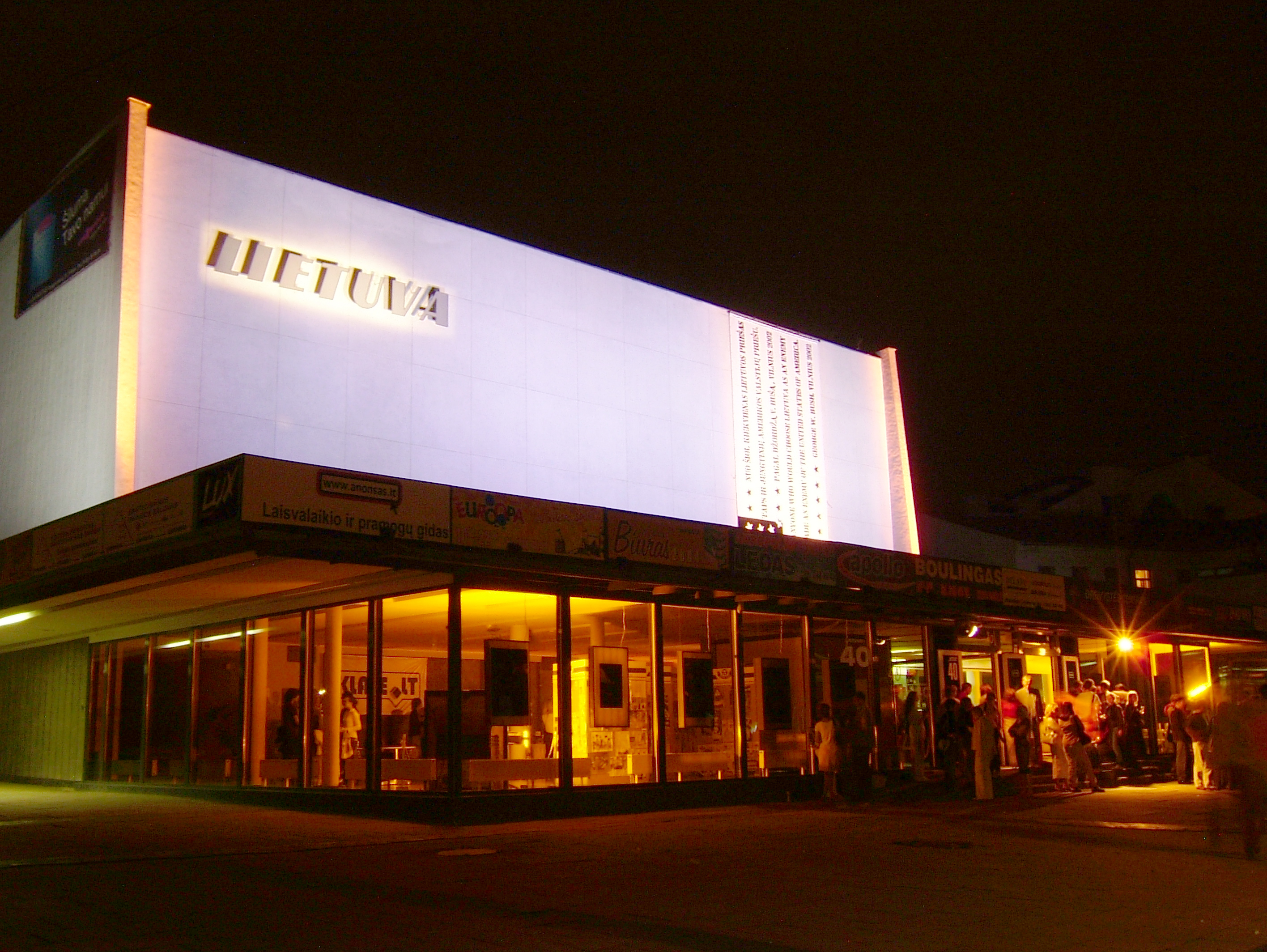
Fighting Cultural Monotony
This post is also available in: Lithuanian, Polish, French, German, Italian, Spanish
Good programming, warm floors
The programming at Skalvija is arranged by a very vocal public, who prefers arthouse films to Hollywood blockbusters. The true public is willing to abandon luxury for this: the theatre offers no Dolby Digital Surround Sound system, and in winter it can get uncomfortably cold in
the screens. To combat this, there is a varied program and dozens of warm blankets in the foyer. But this is allthe visitors need to enjoy a good evening at the cinema.
The work of the cinema goes beyond merely screening the film. Skalvija recently established a film-academy
offspring, where students can venture into the world of filmmaking. With the assistance of film professionals, budding new talents can learn about acting, production and film technology. ‘We promote the talent of the students and develop their cultural awareness. So we draw on our guests for the future,’ explains Zabukaitė.
Enthusiasm of the young
A change of scene: it’s 7pm in the futuristic ‘Life Club’ not far from the city centre of Vilnius, and over a hundred young people have assembled together. Lithuanian film stars are arriving in the midst of the flurry of flashes from photographers. With gentle electronic sounds and calorie-deficient finger food, the Vilnius film festival ‘Kino pavasaris‘ presents this year’s program.
In previous years there have been scarcely 45,000 visitors to the screenings. Within two years viewer figures have doubled. Even with the viewing figures for international films, promoter Vida Ramaškienė still says that the figures beat those of years gone by. ‘Above all, we want to encourage the youngsters. If, say in the future there is no longer any interest in festivals and the cinema, then we won’t give them any more,’ explains Ramaškienė.
The problems of the continued existence of people engaged in the cultural sector in Lithuania are valid. In autumn 2005 the largest independent cinema in Lithuania, ‘Lietuva’, was closed down.

Cinema ‘Lietuva’ named after the country in 1965.
The building itself is to be torn down. In its place investors plan to build exclusive new apartment buildings for the town’s newly arrived upper classes. At the same time the municipality believes that Skalvija’s building should also be bought by private investors. A large part of this blame for the low number of visitors is attributed to the cinema. This seems to signal the collective conclusive end of repertory cinemas in Vilnius.
Loss of diversity
The same applies today as did then: in Vilnius cultural pabulum has been broadly followed. In Soviet times, long queues would build up from evening to evening for the many small cinemas of the Lithuanian capital. Film offered a rare opportunity to conserve Lithuania’s cultural identity. If a Lithuanian goes to the cinema today, it is often to one of the multiplex cinemas in the suburbs, which mainly screen Hollywood blockbusters.
It is thanks in large to the dedication of film and cultural enthusiasts that an alternative film scene exists in Vilnius. An initiative to stop the destruction of cinema in Lithuania is hindered today. However, if the property itself proves beyond rescue, the ‘building must remain a place of culture,’ says Šarūnas Bagdonas, participant of the initiative. Now the court investigates irregularities in the sale of the cinema to private investors. As long as the cinema is not torn down.
Animated scene
For some young people, it has become downright prestigious to voluntarily support independent cinema. The Kino pavasaris festival alone will be backed by thirty volunteers. For the organisers, there have been reports of so many students that they must select a few with whom to meet. ‘We are very glad to have these voluntary helpers. Without them there would be no Pavasaris,’ states Algirdas Ramaška, the festival’s administrator.
One of the helpers is Jurga Stakėnaitė. She is the co-ordinator and person responsible for questions of logistics. She also jointly organises a small winter film festival with the French Cultural Institute in Vilnius. ‘In the last few years, a very lively scene has emerged which focuses above all on showing people interested in culture, in good cinema removed from the Hollywood mainstream,’ explains Stakėnaite.
Zabukaitė can only endorse this. ‘This year there have not been enough weeks in which to keep up with all the festivals,’ explains the manager of Skalvija joyfully. The foreign cultural institutes have been particularly active in organising their own film-weeks or film-festivals. Lithuanian artists are exempt from charges for these.
In the meantime, Skalvija remains debt-free. In December 2006, the municipality was even paid an additional 80,000 Euros at the end of the year upon submission of their balance sheet, adds Zabukaitė. The sale of the building is also on the table. In spite of this, it is possible that Skalvija will soon be removed – its growing popularity means that screens are simply too small.
AUTHOR Sven Becker, TRANSLATOR Gemma Rutter

 English
English Lithuanian
Lithuanian Polish
Polish French
French German
German Italian
Italian Spanish
Spanish